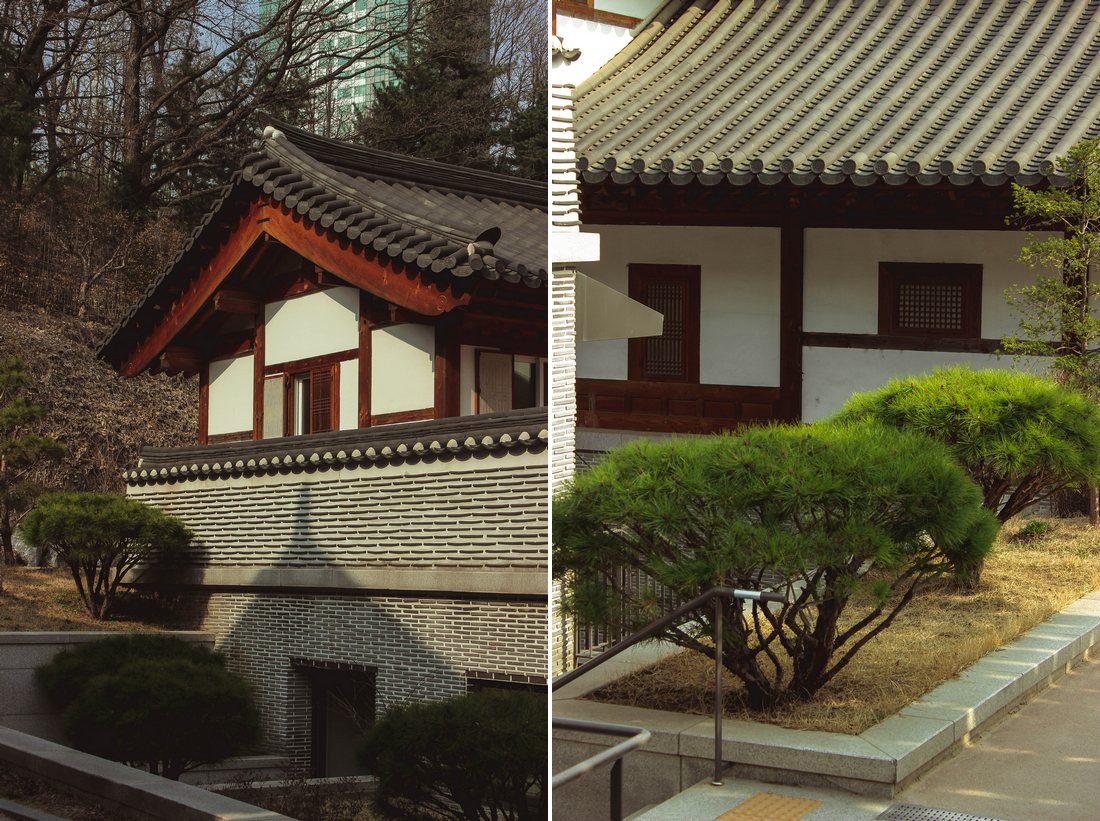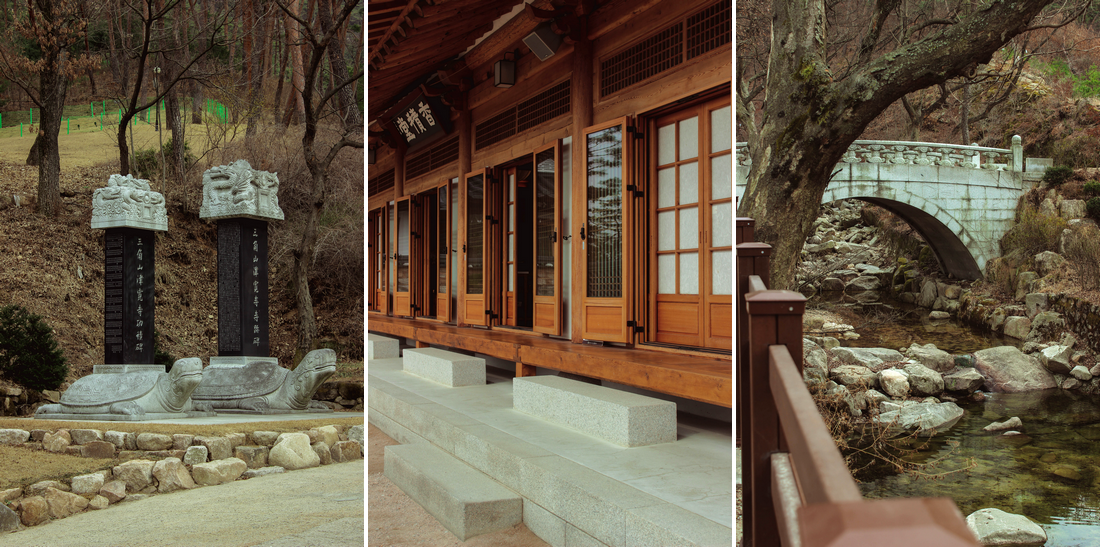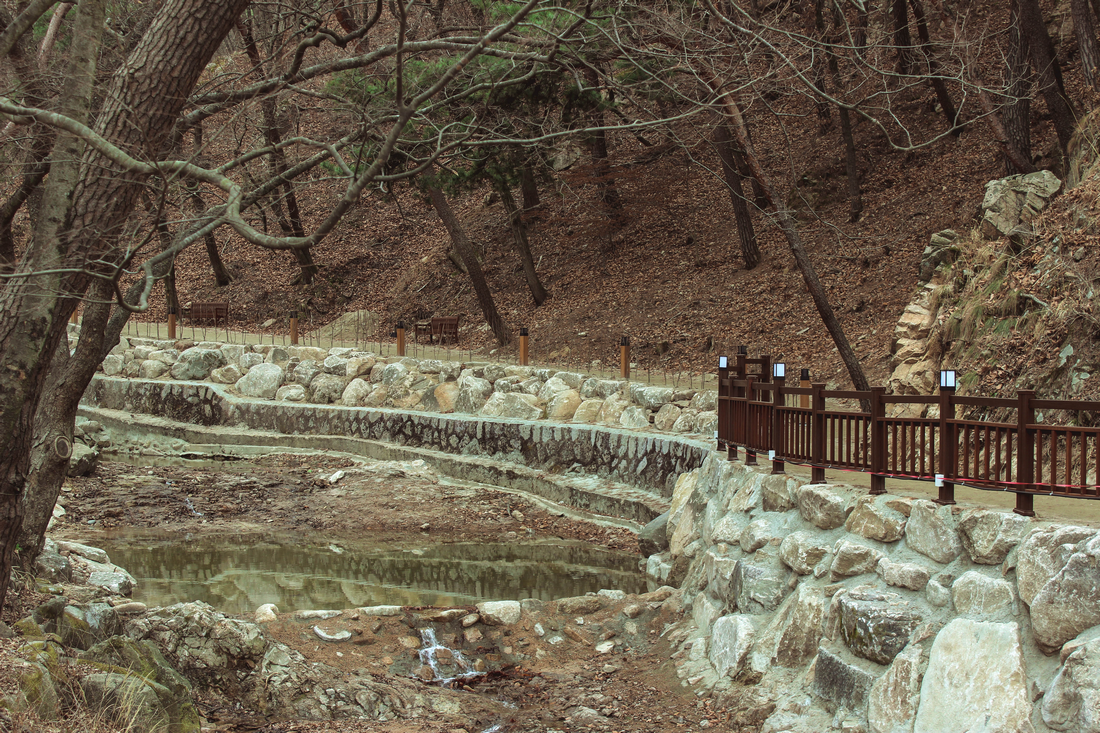Il y a beaucoup d'endroits immanquables à découvrir à Séoul et visiter un temple Bouddhiste me semble en faire partie ! J'ai pu tenter l'expérience pour la première fois lors d'un voyage à Tokyo en fêtant le passage à l'année 2019 dans l'un d'eux. L'article complet de ce Nouvel An que je ne suis pas prête d'oublier est » ICI «. Les jours qui ont suivi, j'ai continué de visiter les différents temples Bouddhistes que je trouvais par hasard sur mon chemin et à chaque fois c'était le même " Wow effect " tellement c'était beau, coloré, chaleureux. C'était impératif que je renouvelle l'expérience pour mon voyage à Séoul notamment car les temples de Corée du Sud sont très différents de ceux que j'ai pu voir au Japon à commencer par l'architecture. Pas besoin de tous les voir et heureusement car il y en a beaucoup ! La question est de savoir lequel ajouter à ses impératif à découvrir à Séoul ? Pour y répondre voici 2 temples Bouddhistes qui ont marqués mon séjour dans la capitale Sud Coréenne. L'un niché en pleine nature, l'autre au beau milieu du quartier d'affaire très moderne de Gangnam.
There are many unmissable places to discover in Seoul and visiting a Buddhist temple seems to me to be one of them ! I was able to try the experience for the first time during a trip to Tokyo while celebrating the transition to the year 2019 in one of them. The full article of this New Year that I won't soon forget is » HERE «. The days that followed, I continued to visit the various Buddhist temples that I found by chance on my way and each time it was the same " Wow effect " it was so beautiful, colorful, warm. It was imperative that I renew the experience for my trip to Seoul, especially because the temples of South Korea are very different from those I have seen in Japan, starting with the architecture. No need to see them all and fortunately because there are many ! The question is which one to add to your must-see in Seoul ? To answer it, here are 2 Buddhist temples that marked my stay in the South Korean capital. One nestled in the middle of nature, the other in the middle of the very modern business district of Gangnam.
There are many unmissable places to discover in Seoul and visiting a Buddhist temple seems to me to be one of them ! I was able to try the experience for the first time during a trip to Tokyo while celebrating the transition to the year 2019 in one of them. The full article of this New Year that I won't soon forget is » HERE «. The days that followed, I continued to visit the various Buddhist temples that I found by chance on my way and each time it was the same " Wow effect " it was so beautiful, colorful, warm. It was imperative that I renew the experience for my trip to Seoul, especially because the temples of South Korea are very different from those I have seen in Japan, starting with the architecture. No need to see them all and fortunately because there are many ! The question is which one to add to your must-see in Seoul ? To answer it, here are 2 Buddhist temples that marked my stay in the South Korean capital. One nestled in the middle of nature, the other in the middle of the very modern business district of Gangnam.
Le plus citadin : Bongeunsa
The most urban : Bongeunsa
On peut dire qu'il en a traversé des siècles puisqu'il a été construit en 794 et maintenant on le trouve niché au milieu de l'architecture très moderne du quartier de Gangnam, juste en face du Coex Mall. Le contraste architectural est à son max et j'adore ça ! Malgré que ce soit un lieu incontournable, et donc très touristique, je ne trouve pas qu'il soit surcoté ! Sur place, tout m'a semblé très grand notamment l'immense statue de Maitreya, haute de plus de 20 mètres, qui est le Bouddha du futur. C'est clairement la masterpiece de ce temple ! Elle est érigée face à une étendue de carreaux lisses fréquemment nettoyés pour permettre aux fidèles de prier sur des tapis mis à disposition.
It can be said that it has gone trough centuries because it was built in 794 and now we find it nestled in the middle of the very modern architecture of the Gangnam district, opposite Coex Mall. The architectural contrast is at its peak and I love it ! Although it's a must-see place, and therefore very touristy, I don't think it's overrated ! On site, everything seemed very big to me, especially the huge statue of Maitreya, more than 20 meters high, who is the Buddha of the future. It's clearly the masterpiece of this temple ! It's erected facing an expanse of smooth tiles that are frequently cleaned to allow the faithful to pray on carpets made available.
Bongeunsa fait également partie des temples qui proposent un programme de Temple Stay qui consiste à y dormir 1 nuit ou plus pour s'initier à la vie dans un temple tout en participant à des activités autour de la méditation et des rituels Bouddhistes. Ce programme est payant mais pas l'entrée au temple, lorsque l'on y vient pour se balader, ce qui fait de Bongeunsa un endroit complètement gratuit à découvrir absolument lors d'un séjour à Séoul !
Bongeunsa is also one of the temples that offer a Temple Stay program which consists of sleeping there for 1 night or more to learn about life in a temple while participating in activities around meditation and Buddhist rituals. This program is to pay but not the entrance to the temple, when you come there to walk around, which makes Bongeunsa a completely free place to discover absolutely during a stay in Seoul !
 |
| Hébergements en Temple Stay. |
Le plus rural : Jingwansa
The most rural : Jingwansa
Après avoir visité le village Hanok de Eunpyeong dont je parle dans l'article juste » ICI « j'ai continué mon chemin à pieds en direction du temple Jingwansa qui est entouré du parc national Bukhansan. La situation géographique a largement contribué à me faire aimer ce temple niché en pleine nature. On y accède en pleine forêt par un pont qui traverse un ruisseau et l'ambiance devient immédiatement très sereine. Le temple se dessine au loin à travers les arbres et une fois sur place on retrouve les lanternes, les couleurs vives et cette architecture très photogénique que j'adore !
After having visited the Hanok village of Eunpyeong which I speak about in the article » HERE « I continued my way on foot in the direction of the Jingwansa temple which is surrounded by the Bukhansan national park. The geographical location has largely contributed to making me love this temple nestled in the middle of nature. It's reached in the middle of the forest by a bridge that crosses a stream and the atmosphere immediately becomes very serene. The temple takes shape in the distance through the trees and once there we find the lanterns, the bright colors and this very photogenic architecture that I love !
Jingwansa est un des 4 principaux temples de la banlieue de Séoul dont l'entrée est gratuite et propose également un programme de Temple Stay qui lui est payant. Tout comme pour le temple Bongeunsa, on ne peut pas visiter tous les bâtiments en tant que simple visiteur et les photos de l'intérieur peuvent être interdites mais s'y balader pour voir ce qu'il s'y passe à l'extérieur n'enlève en rien l'intérêt du lieu qui se distingue des temples Bouddhistes que j'ai pu visiter à Séoul.
Jingwansa is one of the 4 main temples in the suburbs of Seoul whose entrance is free and also offers a Temple Stay program which is paid for. As with the Bongeunsa temple, you cannot visit all the buildings as a simple visitor and photos of the interior may be prohibited, but walking around to see what's going on outside doesn't detract from the interest of the place, which stands out from the Buddhist temples that I have been able to visit in Seoul.


















Aucun commentaire:
Enregistrer un commentaire